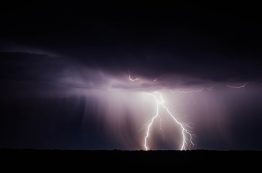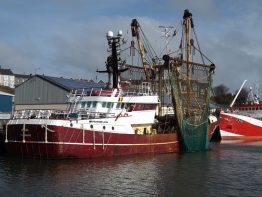Two University of Washington atmospheric scientists—Angela Rowe and Lynn McMurdie—are leaving for a weeks-long, firsthand study of some of the fiercest storms on the planet. They will participate in RELAMPAGO, an international campaign in Argentina to monitor storms that occur east of the Andes near the slopes of another mountain range, the Sierra de Córdoba. The international team hopes to better understand how convective storm systems — the big systems that unleash torrential rains, hail and lightning — initiate and grow as they travel from the mountainous terrain eastward over the plains.
Read more at UW Today »New UW-authored children’s book offers a robot’s-eye view of the deep ocean
After years working on a cabled observatory that monitors the Pacific Northwest seafloor and the water above, a University of Washington engineer decided to share the wonder of the deep sea with younger audiences. The result is “ROPOS and the Underwater Volcano” by Dana Manalang, an engineer at UW’s Applied Physics Laboratory. The book’s illustrator, Hunter Hadaway, is the creative director at the UW-based Center for Environmental Visualization.
Read more at UW Today »Q&A with Harold Tobin, director of the Pacific Northwest Seismic Network
Earthquake expert Harold Tobin joined the UW this fall as professor of Earth and space sciences and director of the Pacific Northwest Seismic Network. While he comes from a faculty position at the University of Wisconsin, he’s no stranger to the risks posed by offshore faults like the Cascadia Subduction Zone, the source of our “big one.” UW News sat down with Tobin to learn a bit more about his research, experience and plans for the UW-based Pacific Northwest Seismic Network, a coalition among the U.S.
Read more at UW Today »High-res data offer most detailed look yet at trawl fishing footprint around the world
About a quarter of the world’s seafood caught in the ocean comes from bottom trawling, a method that involves dragging a net along the ocean’s shelves and slopes to scoop up shrimp, cod, rockfish, sole and other kinds of bottom-dwelling fishes and shellfish. The technique impacts these seafloor ecosystems, because other marine life and habitats can be killed or disturbed unintentionally as nets sweep across the seafloor.
Read more at UW Today »Polar bears gorged on whale carcasses to survive past warm periods, but strategy won't suffice as climate warms
Polar bears likely survived past warm periods in the Arctic, when sea ice cover was low, by scavenging on the carcasses of stranded large whales. This food source sustained the bears when they were largely restricted to land, unable to roam the ice in search of seals to hunt. A new study led by the University of Washington found that although dead whales are still valuable sources of fat and protein for some polar bears, this resource will likely not be enough to sustain most bear populations in the future when the Arctic becomes ice-free in summers, which is likely to occur by 2040 due to climate change.
Read more at UW Today »





